May 24, 2025 | 16:28 GMT +7
May 24, 2025 | 16:28 GMT +7
Hotline: 0913.378.918
May 24, 2025 | 16:28 GMT +7
Hotline: 0913.378.918
Assoc. Prof. Dr. Vo Van Nha, Rector of the Research Institute for Aquaculture No. III, shared that over the past five years, mariculture has made significant strides - transitioning from traditional practices to high-tech methods and moving offshore. This is the correct direction, aligned with the policies of the Government and the Ministry of Agriculture and Environment.
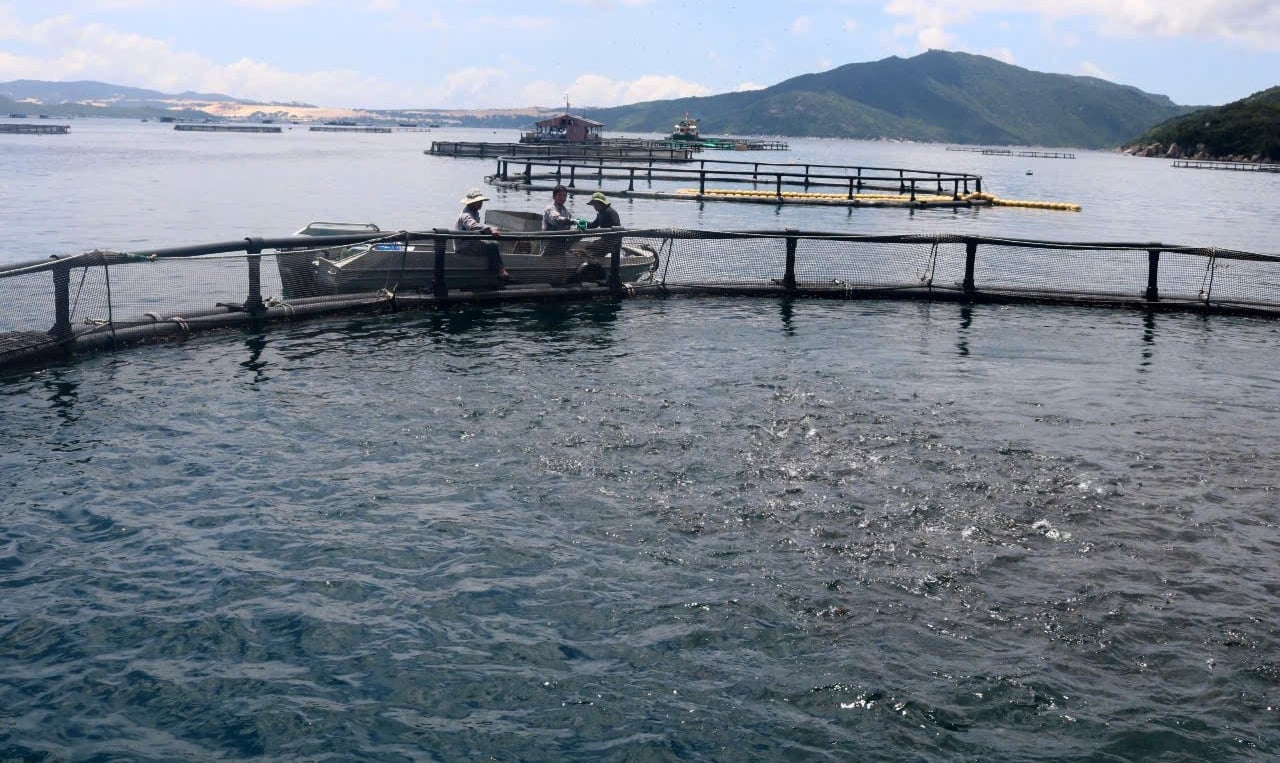
In recent years, the South Central region has developed industrial-scale marine farming using HDPE cages. Photo: KS.
The mariculture policy has created a new momentum, offering clear guidance for coastal provinces, enterprises, and local communities. A striking example is the notable increase in applications for marine aquaculture licenses in key provinces such as Khanh Hoa, Phu Yen, Ninh Thuan, Quang Ninh, and Kien Giang. This demonstrates that the policy resonates with real-life needs, unlocking potential and amplifying community interest and participation.
In Khanh Hoa Province, with a 385 km coastline, over 200 islands of various sizes, and numerous wind-sheltered lagoons and bays along with deep-water ports, there are numerous advantages for developing the fisheries sector, including marine aquaculture.
The practice of cage and raft farming at sea in Khanh Hoa Province began to take shape in the early 1990s, primarily focusing on farming spiny lobsters and several species of marine fish. The key farming areas are concentrated in four main regions: Van Phong Bay (Van Ninh District), Cam Ranh (Cam Ranh City), Nha Trang (Nha Trang City), and Nha Phu Lagoon (Ninh Hoa Town).
In recent years, the farming of Pacific oysters, sea cucumbers, geoducks, hard clams, pearl oysters, and seaweed has also proven economically beneficial for local farmers.
Aquaculture has always played a vital role in the socio-economic development of Khanh Hoa Province, creating rural employment opportunities, increasing incomes, and improving the livelihoods of coastal communities.
However, despite these achievements, marine aquaculture activities in Vietnam in general, and Khanh Hoa in particular, are still mainly conducted nearshore, within 3 nautical miles of the coast. Offshore farming beyond this range has yet to be implemented. Most farming operations remain small-scale, using traditional wooden cages that are low in durability, unstable, and not resilient to natural disasters.
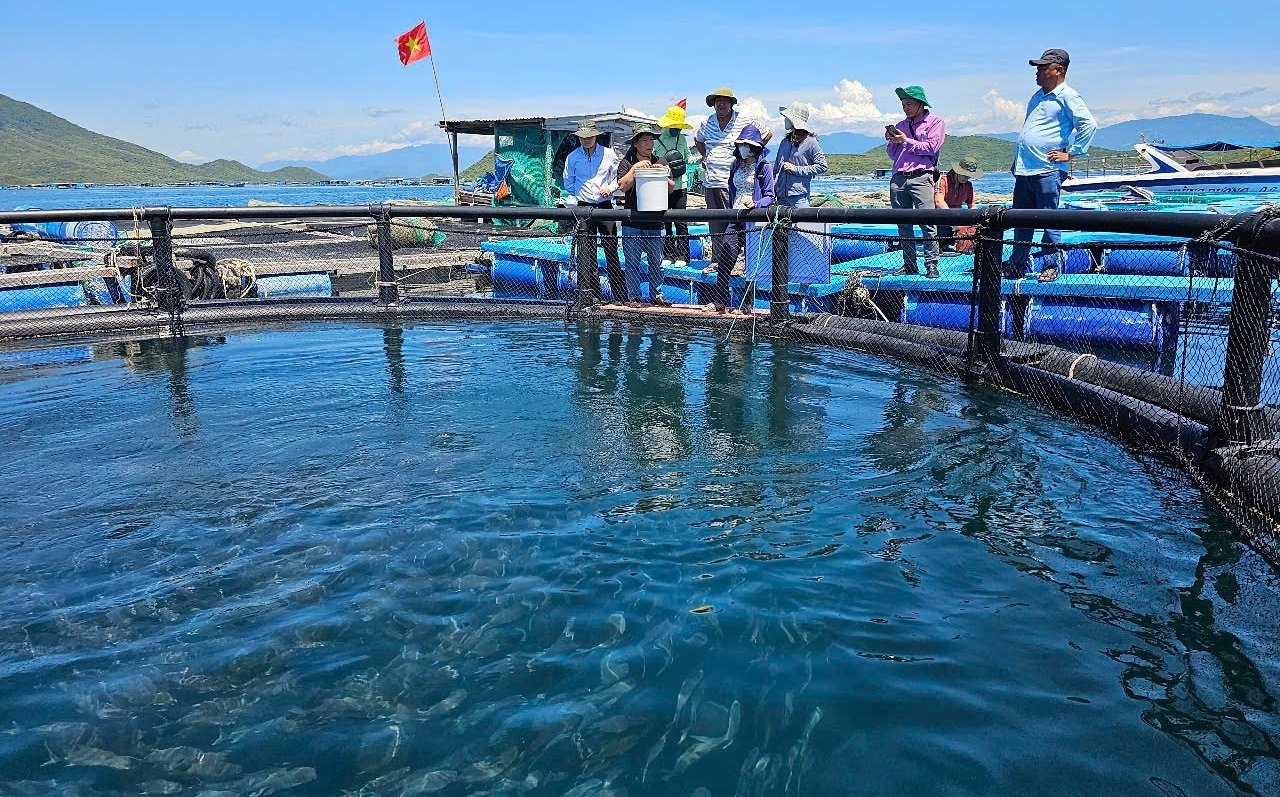
Some people in Khanh Hoa province have started converting wooden cages to HDPE cages. Photo: KS.
Given these shortcomings in traditional marine farming, transitioning from small-scale, outdated methods to large-scale, industrial marine aquaculture using modern technologies—and from household-based to enterprise-based operations—along with moving from sensitive nearshore ecosystems that are prone to overlap with other economic activities to offshore zones, is becoming an essential trend nationwide.
In Khanh Hoa Province, three enterprises have already invested in industrial-scale marine farming using HDPE cages. Specifically, Australis Vietnam Co., Ltd. farms barramundi in Van Phong Bay using 70 circular HDPE cages, with an annual output of 6,000–8,000 tonnes.
The High-Tech Marine Farming Centre operates a model for farming golden pompano in Van Phong Bay using 42 HDPE cages, producing 250–300 tonnes annually. Meanwhile, Phuong Minh Aquaculture JSC runs a similar model with 11 HDPE cages, yielding 150 tonnes of golden pompano per year.
In Ninh Thuan Province, East Sea Squid JSC has initiated offshore squid farming using large HDPE cages, yielding promising early results.
To encourage organisations and individuals to adopt advanced technologies in marine farming, the Politburo issued Resolution No. 09-NQ/TW on the development of Khanh Hoa Province to 2030 with a vision to 2045, highlighting the vigorous development of the marine economy through aquaculture, fishing, and seafood processing - especially high-tech, eco-friendly offshore aquaculture.
This was further detailed by the Government in Resolution No. 42/NQ-CP dated March 21, 2022, issuing the Government’s Action Program to implement Resolution No. 09-NQ/TW dated January 28, 2022. One key component is the "Development and implementation of a pilot project for high-tech marine aquaculture in Khanh Hoa", which lays the groundwork for concretising Vietnam’s marine economic strategy.
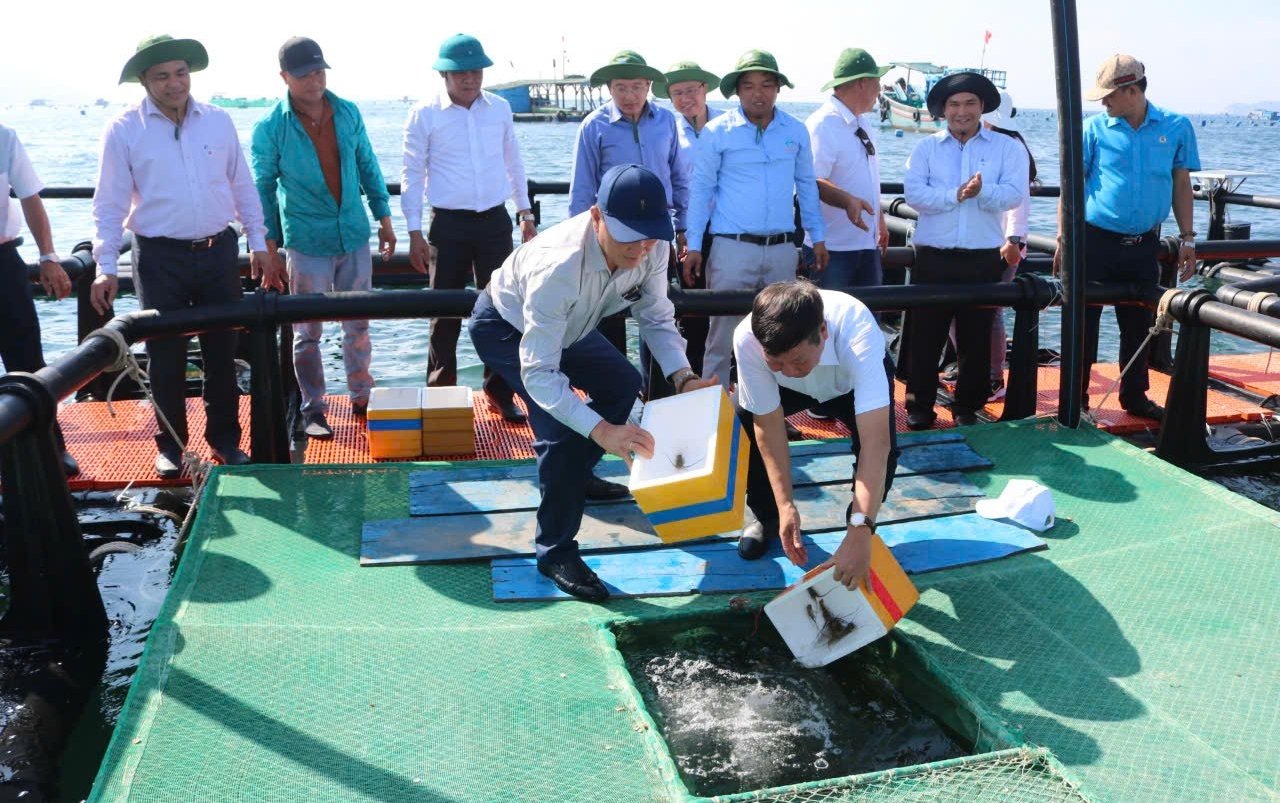
Khanh Hoa province deploys marine farming in the open sea area of Cam Lap, Cam Ranh City. Photo: KS.
Nguyen Duy Quang, Director of the Department of Agriculture and Environment of Khanh Hoa, stated that the high-tech marine aquaculture project is a new and challenging undertaking. However, during its development, the department closely collaborated with the consultancy unit—the Research Institute for Aquaculture No. III—and organised seminars to gather feedback on the draft project. These involved state management agencies, scientific research bodies, universities, enterprises, and top experts in the aquaculture sector. The input was used to refine the proposal before submitting it to relevant ministries and agencies for feedback and final submission to the Prime Minister for approval.
While awaiting the Government’s approval of the project, since June 2023, the Khanh Hoa Department of Agriculture and Environment and the Research Institute for Aquaculture No. III, with financial support from the Thien Tam Fund (Vingroup), have developed a pilot model of high-tech marine farming in the open sea area off Cam Lap commune, Cam Ranh City.
Initially, the pilot selected 10 qualified households and provided support for 16 circular HDPE cages (800m³ each) for marine fish and 12 square HDPE cages (24m³ each, 2-layer design) for lobster farming. Notably, the cages are equipped with surveillance cameras and GPS tracking systems, enabling 24/7 remote monitoring via digital devices.
The pilot phase has concluded with very positive results. This lays the foundation for Khanh Hoa Province to expand the model in the near future and is a clear testament to the growing trend of high-tech and offshore aquaculture in the South Central provinces, particularly in Khanh Hoa.
The initial success of this advanced marine farming pilot is a strategic step toward venturing further offshore. It also sets the stage for the province to transition toward industrial-scale marine farming, creating substantial economic value and establishing the sector as a key pillar of Vietnam’s economy.
Translated by Linh Linh
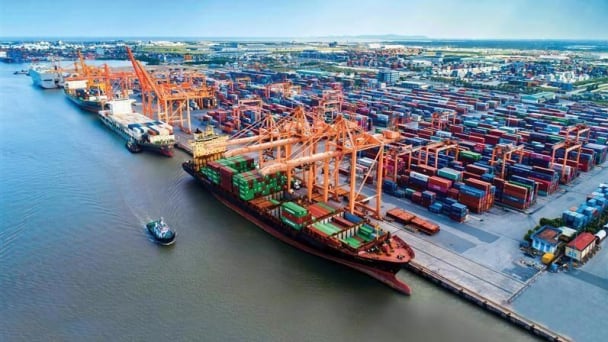
(VAN) South Korea is currently the second-largest investor in Hai Phong in terms of the number of projects (186 projects) and the largest in terms of total registered investment capital, reaching USD 14.2 billion.
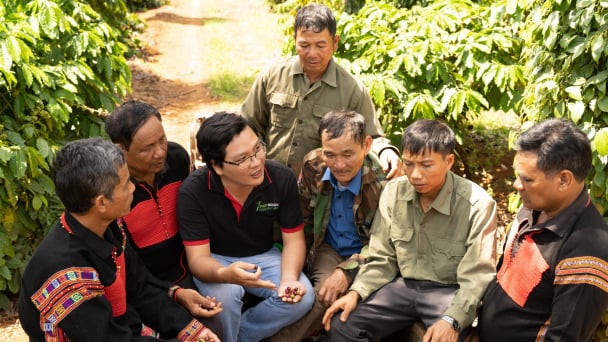
(VAN) As consumers become more environmentally conscious, legal regulations grow increasingly stringent...
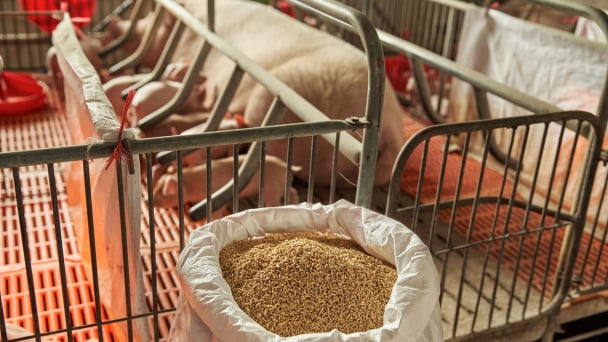
(VAN) CJ Feed&Care officially launched the FCR improvement campaign called “2025 Find Challenge Reach” in April 2025. In Vietnam, this campaign is implemented by CJ Vina Agri.
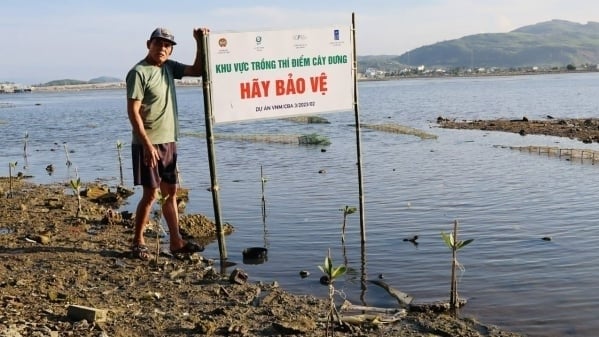
(VAN) The swamp in Pho Thanh is gradually being covered with red mangrove, creating a favorable environment for producing clean, high-quality salt.
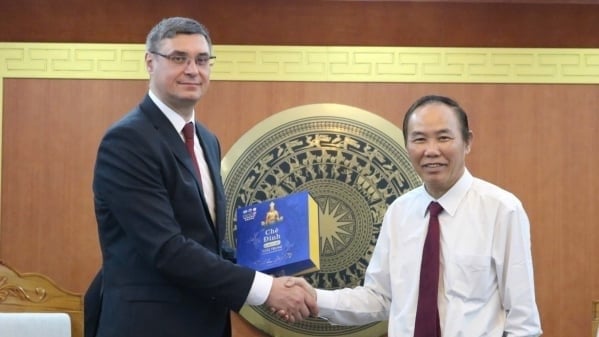
(VAN) The trade turnover of agro-forestry-fishery products is growing significantly, along with investment cooperation commitments that are opening up new development directions between Vietnam and Russia.
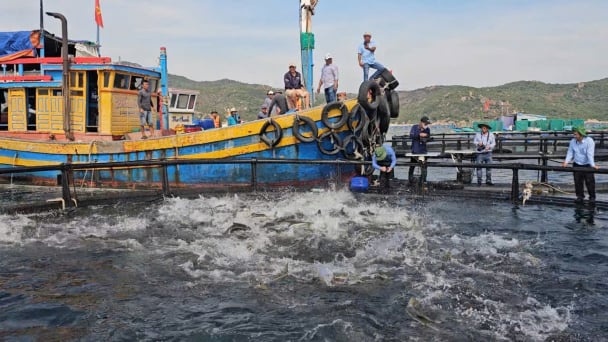
(VAN) Khanh Hoa is investing over 545 billion VND to develop 240 hectares of high-tech marine aquaculture in order to guarantee a consistent supply of seafood exports and achieve the USD 1 billion target.